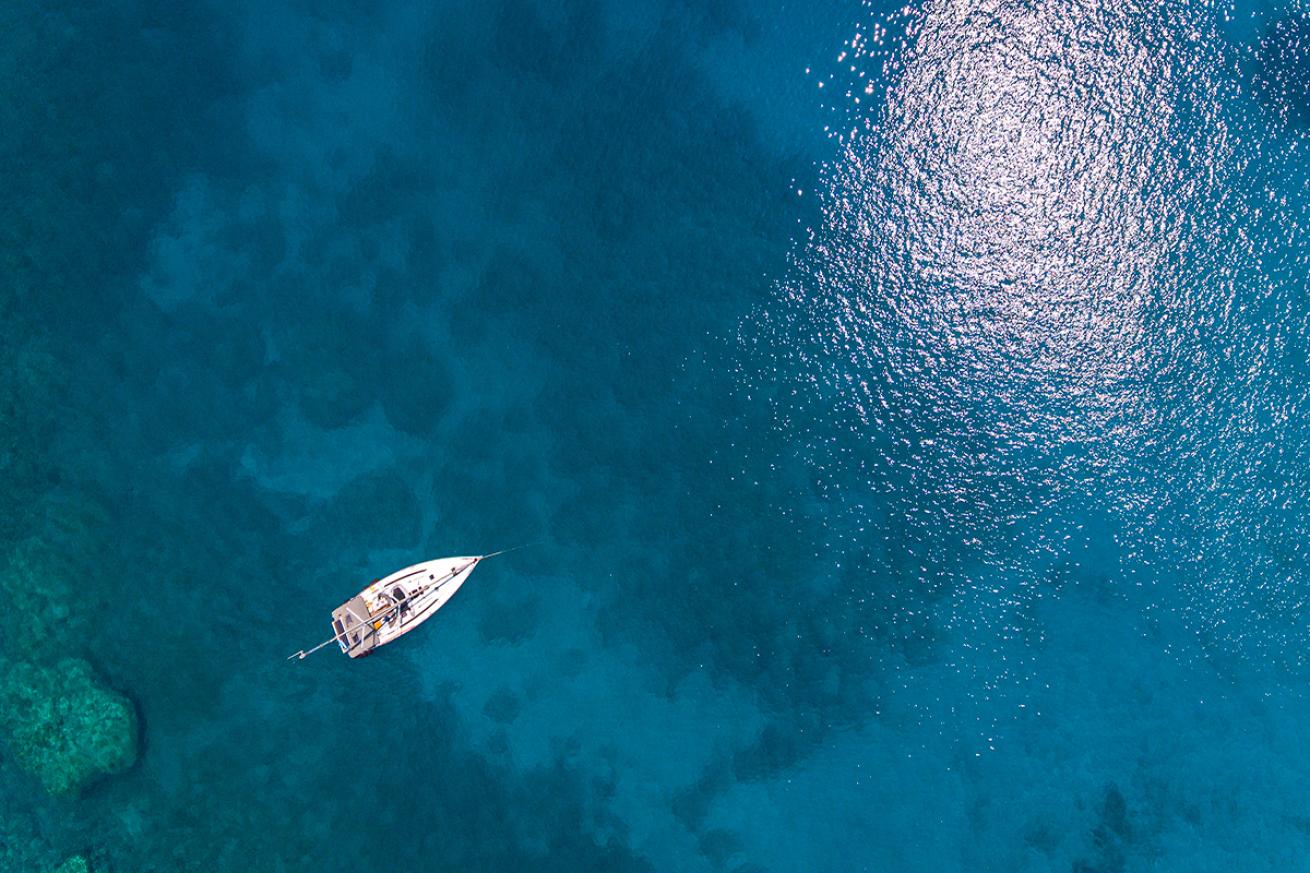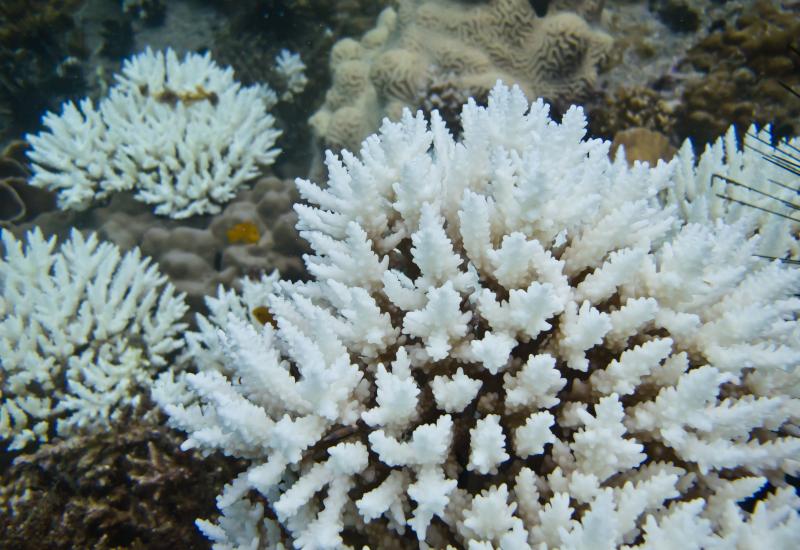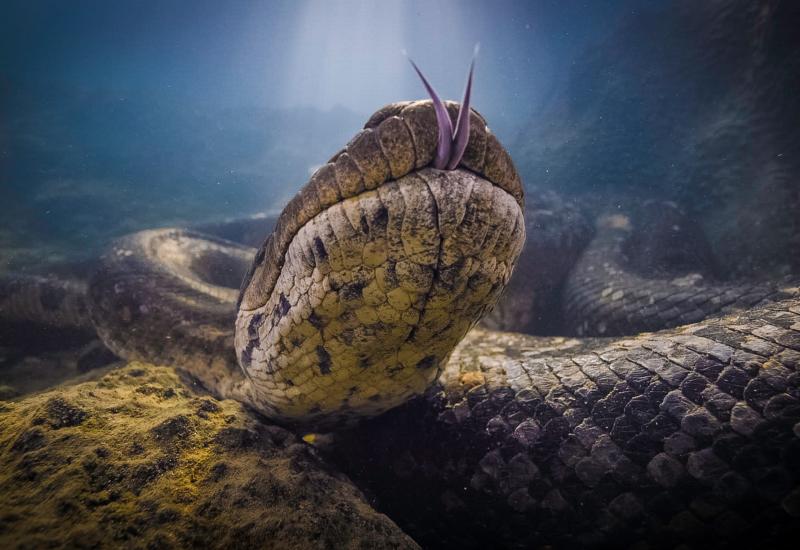Tourism Restrictions Strain Marine Protected Areas Amid Global Push for Expansion

Shutterstock.com/Vladimir HodacCOVID restrictions are posing complications for marine protected area funding and operations.
Loss of tourism revenue from continued COVID travel restrictions is straining the budgets of marine protected areas around the world, reducing conservation activities and stressing the communities reliant on a steady flow of eco-tourists. These tensions come as the push to protect 30 percent of the ocean by 2030 gains global momentum.
“We lost about 90 percent of our income” when tourism ground to a halt, said Xenah Cicilia, communications advisor for STINAPA Bonaire, the foundation that oversees Bonaire National Marine Park.
The majority of the foundation's funding to pay rangers for park monitoring or mooring maintenance comes from entrance fees charged to international tourists. Bonaire's tourism industry was growing pre-COVID, with a 7 percent jump in people flying to the island from 2018 to 2019. In the absence of visitors, the park is relying on savings and aid from the government of the Netherlands to avoid layoffs and continue reduced park operations.
“We saved a lot over the years, so that's why we're still able to survive for this year and a large portion of next year,” said Cicilia. “However, what's going to happen after that is where our concern is.”
Across the world, the same forces fractured the budget of the Seychelles Islands Foundation (SIF), which oversees the UNESCO World Heritage marine protected area of Aldabra Atoll and the terrestrial protected area Vallée de Mai.
In 2019, more than 107,000 international tourists visited Vallée de Mai, paying entrance fees that fund both parks.
In 2020, the park has welcomed fewer than 30,000—with only 482 paying visitors since early April. And Aldabra Atoll, which started the year on track to turn its own profit from cruise visitors for the first time, has no ships scheduled to dock. As in Bonaire, SIF is pulling from its savings to pay staff salaries.
“The challenges are huge,” said Dr. Fanny Douvere, leader of UNESCO’s World Heritage Marine Programme, a collection of 50 MPAs with significant global value protected by UNESCO’s World Heritage Convention. “What we see is a clear correlation between having no tourism revenues anymore” and a drop in funding available for conservation and monitoring for illegal activities, like fishing.
Replacing the lost revenue is difficult. About half of the funding for St Kilda, a Scottish archipelago that is also designated as a marine UNESCO World Heritage Site, disappeared once visitors no longer paid the pier docking fee or shopped at its gift store. The St Kilda Club, a volunteer group dedicated to supporting the site, has made about $10,300 from its online store this year compared to the roughly $26,000 the club’s on-island gift shop generates in a typical year, with the vast majority of sales generated during a single online conference.
The disappearance of park visitors is also felt sharply outside of the protected areas, as local and national economies rely on marine tourists. Tourism generates 66 percent of the Seychelles’ gross domestic product, for example, which the United Nations Conference on Trade and Development estimates has contracted by 16 percent during the pandemic.
That community stress can lead to a shift in park regulations and priorities. “We see that, temporarily, fishing regulation has to be adapted [in some parks] because people are just simply going to die from starvation” otherwise, said Douvere. And in the Philippines and Mauritania, parks have shifted focus from marine conservation to ensuring the residents have food and medicine.
“Recovery packages need to incorporate the communities that are supporting MPAs and MPAs supporting them,” said Dan Laffoley, marine vice chair for the World Commission on Protected Areas and principal advisor of marine science and conservation for the IUCN’s Global Marine and Polar Programme. “This is not a take it or leave it type of thing, where we can’t support the MPAs, because if you’re not supporting the MPAs you’re not supporting the local communities.”
Movement restrictions also pose additional complications for park operations, even when funding exists. St Kilda was unable to send a bird ranger to the island this year, leaving an extended knowledge gap in a multiyear longitudinal population study. Researchers in the Aldabra Atoll are experiencing similar capacity reductions in data collection, and both parks have indefinitely delayed important infrastructure maintenance.
Eyeing Expansion
Ocean experts like Laffoley say these struggles highlight the necessity of increased government support of nature reserves.
“If saving the soul of the planet depends on tourists’ dollars rather than commitments from governments, there’s a clear message there,” he said.
Marine protected areas in the United States, for example, saw a drop in visitors of nearly 50 percent between October 2019 and September 2020 compared to the 12 months immediately before, from 272,000 visitors to 130,000. But the park budgets did not shrink as a result, since funding is appointed by Congress rather than generated through visitor fees.
In late September, political leaders participating in the United Nations Summit on Biodiversity committed to “putting biodiversity, climate and the environment as a whole at the heart” of COVID-19 recovery and “significantly” increasing ocean conservation through protected areas. This pledge comes in the run-up to the 2021 Convention on Biological Diversity, a meeting where global leaders will vote on an international resolution to designate 30 percent of the oceans as protected by 2030. Currently 2 to 7 percent of the ocean is protected globally, depending on how the term is defined.
“There is a myth, right? That we have to choose between the economy and the environment,” said Dr. Enric Sala. An ecologist, Sala is a National Geographic Explorer-in-Residence who founded the Pristine Seas program and is one of the leaders of the Campaign for Nature. Both initiatives aim to persuade world leaders to establish new marine protected areas.
Sala points to research that indicates every $1 invested in ocean conservation produces $5 in economic benefits. MPAs preserve and generate biodiversity, he said, and “we know that biodiversity protects us from disease.” Pandemic recovery is going to cost trillions of dollars, whereas “protecting 30 percent of the planet, which is a big part of the solution, will cost $140 billion. Trillions versus $140 billion.”
Whether governments will adopt the 30 by 30 resolution or support existing verbal commitments with policy on the ground remains to be seen. Mexico endorsed the September declaration, but President Andrés Manuel López Obrador cut funding for its National Commission for Protected Natural Areas by 75 percent earlier this year, citing pandemic costs.
“This is not a moment to invest in industries of the past…but to invest in the industries of the future,” said Sala. To do otherwise is like “trying to make as much money as we can in the casino of the Titanic after it’s hit the iceberg.”










